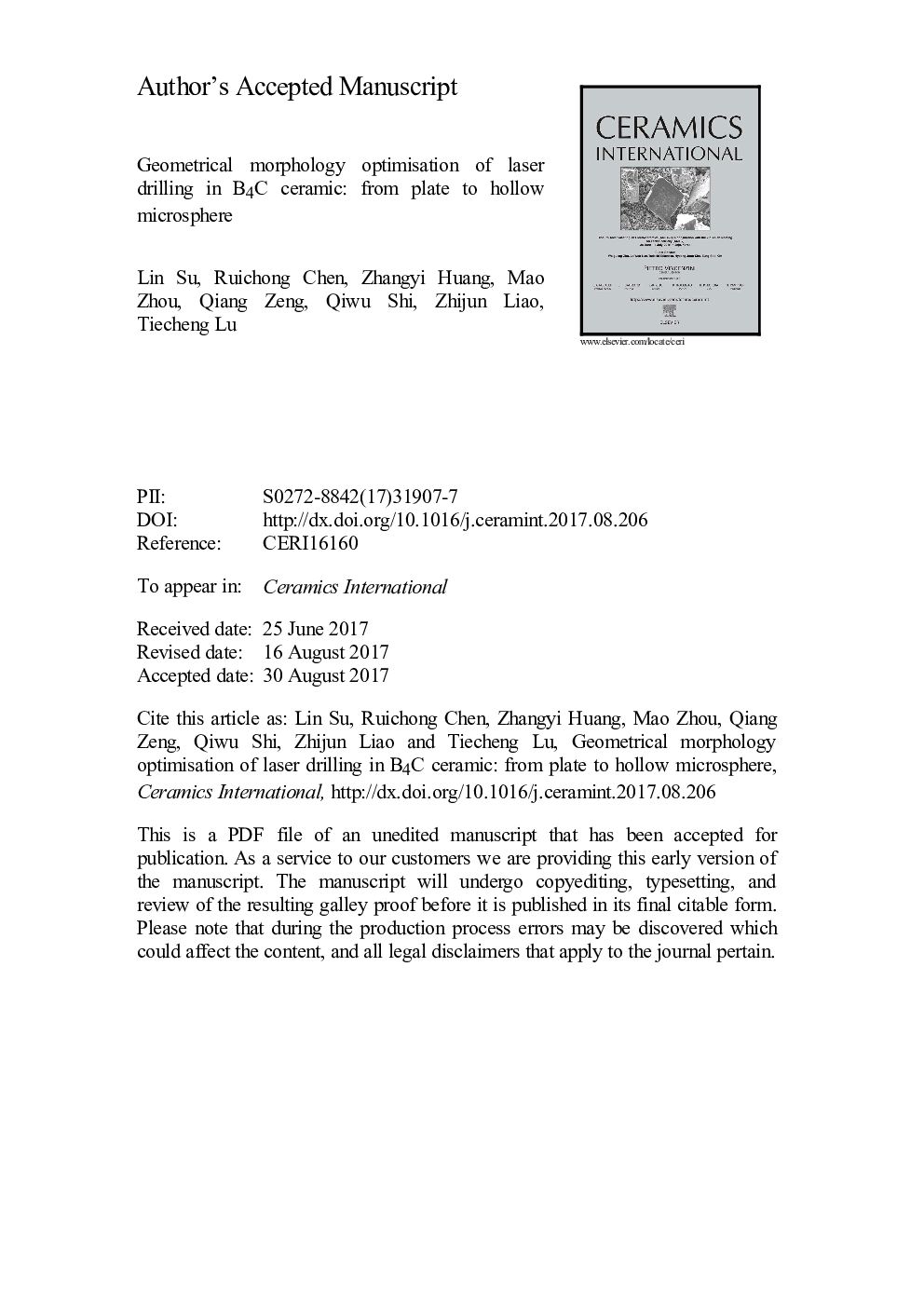| Article ID | Journal | Published Year | Pages | File Type |
|---|---|---|---|---|
| 7888704 | Ceramics International | 2018 | 24 Pages |
Abstract
Boron carbide (B4C) ceramic plates with 400-µm thickness and hollow microspheres were used for hole machining study with a fibre laser. The diameter, hole circularity, taper angle, and recast layer were evaluated as functions of processing parameters such as the peak power and the ablation time. Scanning electron microscope (SEM) was used to observe surface morphologies of drilled materials and the attached energy-dispersive spectrometer was used for elemental analyses of recast layers around holes. Based on the results of characterisations, holes on front side were found to have a larger diameter but a worse circularity than those on back side under different conditions. The taper angle was steady near 1.8° with the increase in laser parameter values. To obtain holes on B4C ceramic with relatively good quality, the peak power and the ablation time should be controlled to be about 40 W and in 5-10 ms. In addition, compared with previous reports, superior holes drilled on B4C hollow microspheres with a better circularity and smooth layer on the inner wall can be obtained.
Keywords
Related Topics
Physical Sciences and Engineering
Materials Science
Ceramics and Composites
Authors
Lin Su, Ruichong Chen, Zhangyi Huang, Mao Zhou, Qiang Zeng, Qiwu Shi, Zhijun Liao, Tiecheng Lu,
